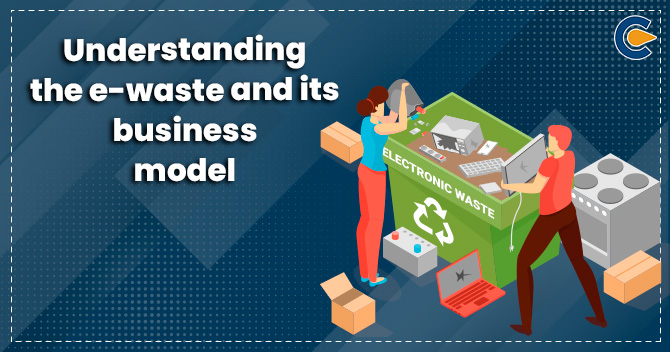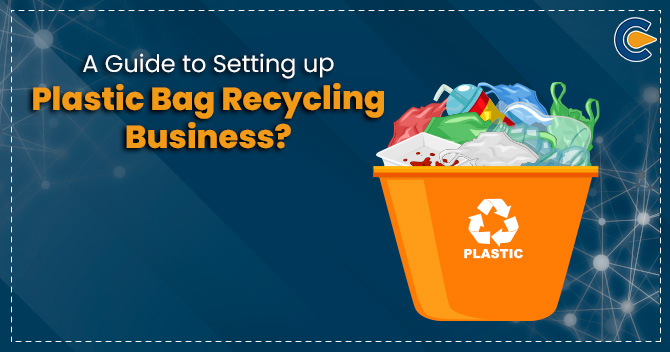Electronic devices at the global level have become a serious socio-economic and technical challenge. The primary challenge is managing them at their end-of-life stage. The traditional way of managing end-of-life electronic products or e-waste is hazardous to human health and the environment. To achieve the target of managing the e-waste at the global level, the development of an e-waste business model is compulsory.
Meaning of E-waste
The electronic products that are not used or not working or at the end of their life are called e-waste. All the electrical equipment that has been discarded is treated as e-waste. This may include all the non-working and broken items that are thrown in the garbage. E-waste is dangerous because of the toxic chemicals it has.
The challenge of the best method of disposal of used and unwanted electronics is not something new to the world; it has been there since the 1970s. However, a lot has changed now, but the number of e-waste has also increased massively with such changes. Nowadays, not only non-useful electronic products but the one which lacks in advance technology or good speed are also discarded as e-waste.
The e-waste comprises home appliances[1], communications and IT devices, entertainment devices, electronic devices, electronic utilities, and office and medical equipment.
Most electronics contain toxic materials such as cadmium, mercury, beryllium and lead, which are a severe risk to the environment. If the e-waste gets buried at the landfill, then it is called leaching. The more E-waste and toxic metals at the landfill, the more trace of toxic materials in groundwater, soil and air.
List of E-waste items
There are a number of different terms that are considered E-waste for starting an e-waste business; some of them are as follows:
Home appliances
- Microwaves
- Home entertainment devices
- Electric cookers
- Heaters
- Fans
Communications and IT devices
- Cell phones
- Smartphones
- Desktop computers
- Monitors
- Laptops
- Circuit boards
- Hard drives
Entertainment devices
- DVDs
- Blu Ray Players
- Stereos
- Video game system
- Fax machines
- Copiers
- Printers
Electronic utilities
- Message chairs
- Heating pads
- Remote controls
- Television remotes
- Electrical Cords
- Lamps
- Smart lights
- Night lights
- Treadmills
- FitBits
- Smartwatches
- Heat monitors
- Diabetic testing equipment
Office and medical equipment
- Copiers
- Printers
- IT Server packs
- IT Servers
- Cords and Cables
- WiFi Dongles
- Dialysis Machines
- Imaging Equipment
- Phone & PBX systems
- Network Hardware
- Power Strips
- Power Suppliers
- Uninterrupted Power Suppliers
- Power Distribution Systems
- Autoclave
- Defibrillator
Definition of E-waste business model
The E-waste business model develops from the recycling industry working as per the rules and regulations of the country where it is established. In our country, such rules and regulations are coming from pollution control to pollution prevention, increasing the following of the e-waste business model.
The e-waste business model of a developed system is built using such a toolkit which economically justifies the smart e-waste reverse system. The specialized e-waste processing entities create a value proposition in a developed business model. The entities are most likely to be part of the collection of their end-of-life electronic products because they consider re-manufacturing and refurbishment strategies to be a business model for capitalizing on left materials.
The business model is for supporting the sustainable value chain through the use of the Informational Technologies tool and the digitalization principles. The business model helps in e-scrap asset valuation and understanding future statistics of e-waste.
Importance of the E-waste business model
The e-waste business model is very important for the processing business of e-waste. Some of the basic importance is given below:
- An integrated and sustainable business model helps in proper e-waste management.
- A business model related to MSW may help in the disposal and segregation of e-waste.
- Business models have aimed at household e-waste management also.
- A business model creates a link between the governing bodies and non-governmental entities involved in e-waste management.
- The business model focuses on the Extended Producer Responsibility.
- The business model has a structured methodology containing collection system development.
- It focuses on the introduction of developments to gain economic benefits.
- The business model is very calculative about the capacity of the entity to generate revenue.
Conclusion
A huge number of phones, appliances and other e-waste are thrown in the open and end up in landfills every day. Any electronic that is no longer needed or wanted is considered e-waste. The increase in the e-waste problem has resulted in so many opportunities in the market as companies are stepping into addressing such problems. But for any company or entity trying to start any business related to the processing of e-waste, it requires a properly framed business plan and business model. The e-waste business model is developed so that these industries work according to the rules and regulations made for the purpose in our country.
Read our Article:E-waste business for its recycling











